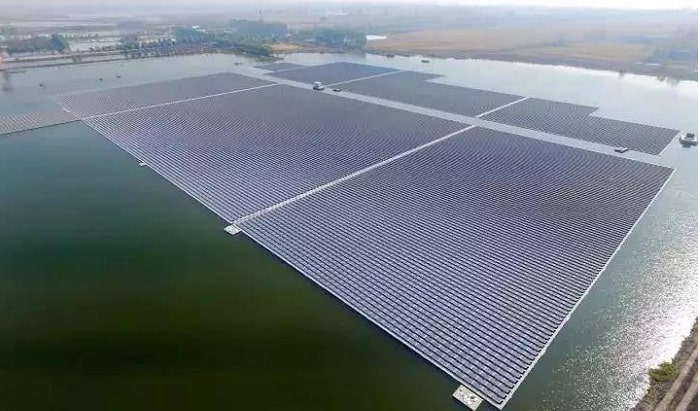Located in Wanlan Town, Zhenfeng County, in China’s Guizhou Province, Guizhou Electric Power Design and Research Institute’s 105MW photovoltaic plant has already achieved a significant demonstration profile locally. The large scale deployment of LONGi’s Hi-MO 4 module (166mm) with high power, lower BOS cost and lower LCOE, has brought higher power generation gains to the project owner and showcased the advantages in the construction process of the plant.
The project is built on the mountainous terrain of Yunnan-Guizhou and is divided into 5 areas with a total of 40 photovoltaic power generation square arrays. Each sub-square array is boosted to a voltage level of 35kV by using a 2000kVA box inverter integrated device. The electric line is connected to the 35kV bus bar of the booster station.
The rugged terrain of the project, with the pre-buried piles having basically been artificially poured, will inevitably make any construction process more complex and time consuming. Generally speaking, 4 people can pour 20 pile foundations in one day, with an extra day required for solidification. Using the high-power Hi-MO 4 module (166mm wafer), the pile foundation requirement is reduced by about 8%, significantly shortening transportation time and effectively reducing the amount of engineering necessary, thus improving construction efficiency.
“LONGi’s Hi-MO 4 module has high power generation, especially in the application of large-scale ground power stations, and also has a reliable and stable long-term power generation capability. With the same installation capacity, the use of Hi-MO 4 shortens the tracker installation process. As the number of module installations is reduced, the manual installation cost is lowered by about 6%, which brings significant benefits to the owner,” said the person in charge of the power plant.
Wanlan Town has good soil conditions but, due to its steep terrain, it has remained under developed. This project adopted the model of integrated photovoltaic and agricultural power generation. It will create agricultural economic benefits while simultaneously generating electricity, bringing more employment opportunities for local farmers who live near the villages and towns, effectively promoting the development of emerging industries.





































